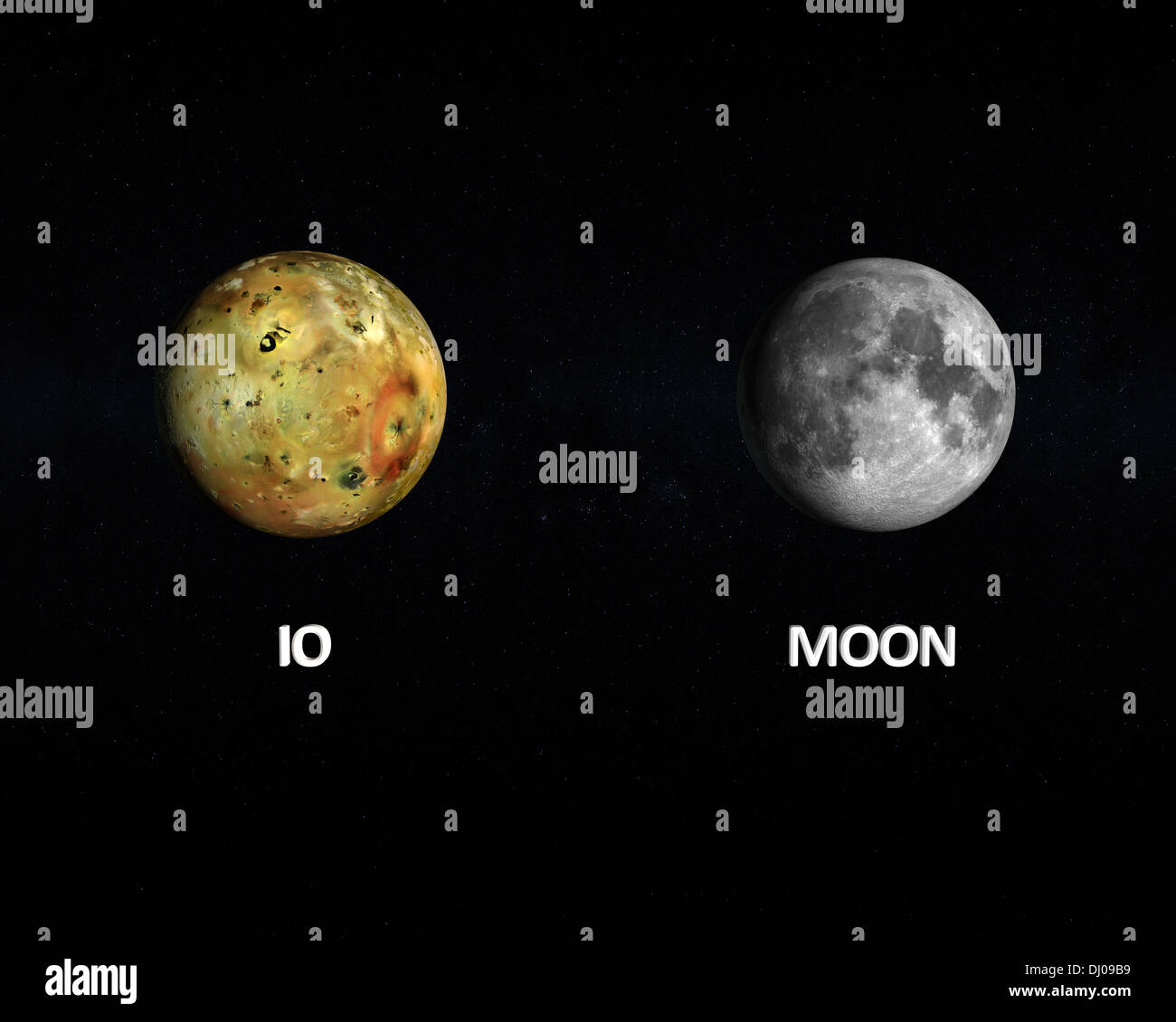

While the complete makeup of Io’s surface is not yet defined, theories suggest that its main component could be sulfur and sulfur compounds because of the varied coloring. Because of this, the surface of Io experiences a constant state of renewal sites once home to large craters are slowly filled with molten lava and liquid rock. And this creates extreme tidal forces.Ī side effect of these tidal forces is heat, which keeps most of Io’s crust in liquid form.

IO MOON MASS PLUS
Thanks to Io’s proximity to Jupiter, it finds itself caught between the gravity of its planet plus the two nearby moons – Ganymede and Europa. The reason for this intense activity is the tidal heating caused by friction in the moon’s interior. Perhaps the most interesting feature of this lunar body is the 400 active volcanoes on its surface, which make it the most volcanically active object in the Milky Way some of these volcanoes can exude plumes of sulfur to a height of several hundred miles. In addition, Io has the strongest surface gravity of all moons and the least water by atomic ratio compared to any other astronomical object in our solar system. It is the fourth-largest moon in our solar system by size – with a diameter of 3,643km – but has the highest density of all moons in the Milky Way. The Moon Io – also known as Jupiter I – is the third largest of the Galilean moons, which has the closest orbit to Jupiter. It is among the bigger moons in our solar system with a diameter of 3,474.8km and a mass of 7.35 × 10^22 kg, which actually places it fifth amongst all moons in our solar system and would also make it bigger than the dwarf planet Pluto.ĭespite all the advancements in technology, the last time a manned mission was made to the Moon was on the Apollo 17 way back in December 1972 and no further missions have been done since, possibly as result of the political agendas behind the numerous countries vying for opportunities that we don’t know of. Speaking of the Moon’s surface, the entity is mostly made of rocks, iron, magnesium just like most of the other moons and terrestrial based planets in our solar system. This is as a result of the lunar entity’s extremely thin to practically non-existent atmosphere, which not only results in these massive temperature shifts but, is also the reason why it has over 100,000 craters on its surface. It’s core on the other hand is far hotter ranging between 1,327 to 1,427 degrees Celsius. In regards to its temperature, it fluctuates where it can be really hot at 127 degrees Celsius when the Sun is shining on it and to -173 degrees in areas where the Sun does not strike it. As a result of the tidally locked status along with the effects that Earth has on its general rotational patterns, it takes the Moon roughly 29.5 days to complete a day. The Moon’s axial tilt is very straight at 1.5 degrees. It takes the moon roughly 27 days to complete an orbit around Earth, which it does in an elliptical pattern. It is also tidally locked to Earth meaning that we only see one side of it at any time in our sky. The moon is the gray celestial being that orbits our Earth.


 0 kommentar(er)
0 kommentar(er)
